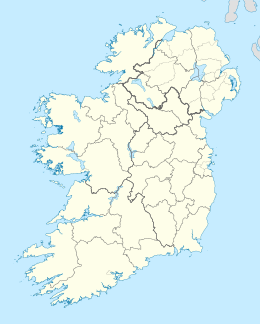This article needs additional citations for verification. (October 2019) |
Native name: Oileán an Tairbh | |
|---|---|
 Dollymount Strand looking towards Dublin City | |
| Geography | |
| Location | Irish Sea |
| Coordinates | 53°22′01″N 6°08′55″W / 53.367065°N 6.148560°W |
| Length | 5 km (3.1 mi) |
| Width | 0.8 km (0.5 mi) |
| Coastline | 11 km (6.8 mi) |
| Administration | |
| Province | Leinster |
| County | Dublin |
| Local authority | Dublin City Council |
| Demographics | |
| Population | 14 (2022)[1] |
| Official name | North Bull Island |
| Designated | 6 September 1988 |
| Reference no. | 406[2] |
Bull Island (Irish: Oileán an Tairbh), more properly North Bull Island (Oileán an Tairbh Thuaidh), is an island located in Dublin Bay in Ireland, about 5 km long and 800 m wide, lying roughly parallel to the shore off Clontarf (including Dollymount), Raheny, Kilbarrack, and facing Sutton. The island, with a sandy beach known as Dollymount Strand running its entire length, is a relatively recent, and inadvertent, result of human intervention in the bay. The island lies within the jurisdiction of, and is mostly owned by, Dublin City Council, and is managed by the Council's Parks and Landscape Division.
Bull Island, which is accessed by way of a causeway bridge from Raheny and a wooden bridge from Clontarf, has the most designations of any site in the country, as a National Bird Sanctuary, a biosphere reserve, a National Nature Reserve, a Special Protection Area under the EU Birds Directive, and a Special Area of Conservation under the EU Habitats Directive, while also being the subject of a Special Amenity Area Order. It is a car-free zone. It holds a wide variety of plant and bird species, and a limited range of mammals, one reptile, one amphibian and a modest range of invertebrates; one mammal species, the hare, became extinct in the later 2010s.
- ^ Population of Inhabited Islands Off the Coast (Report). Central Statistics Office. 2023. Retrieved 29 June 2023.
- ^ "North Bull Island". Ramsar Sites Information Service. Retrieved 25 April 2018.
